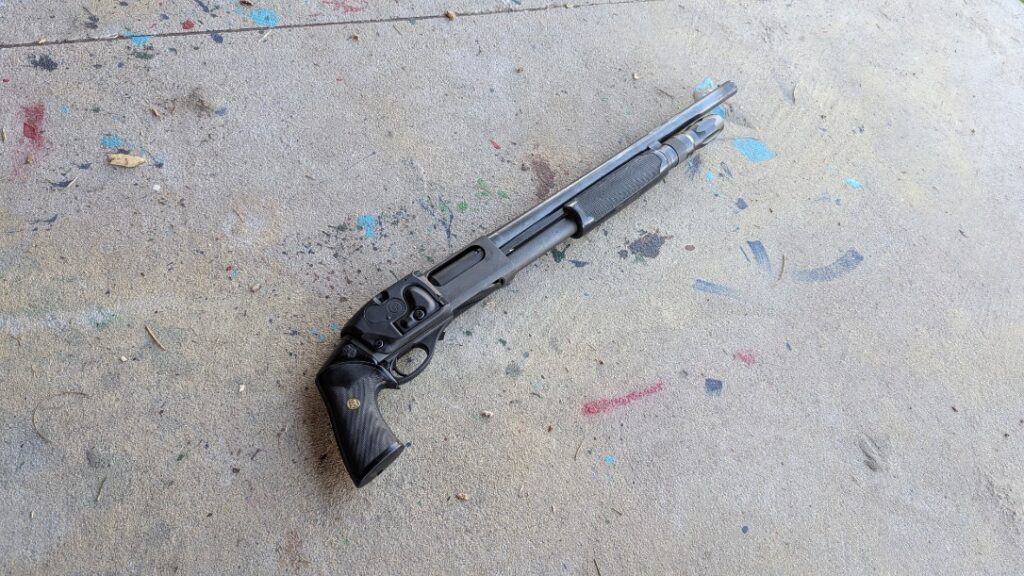Remington has a great origin story. Eliphalet Remington looked at the rifles on the market and decided he could build a better gun than he could buy, so he did. He built a flintlock rifle and competed with it, doing rather well. He began taking orders and founded the business that, by 2015, would produce more rifles than any other company out there. Somehow by 2018, the company faced bankruptcy, and Freedom Group was eventually broken up and sold. There were many factors leading to this, and one includes a little gun called the R51.
The Remington R51 was the final nail in the coffin, or well, at least it was a nail in the coffin. The real villain was mismanagement, a drop in QC, and the absorption and destruction of plenty of successful companies. The R51 wasn’t even the last handgun Remington produced that flopped hard, but it was the most noticeable. It’s quite sad because the concept had merit.
The Origins of the R51
Way back when, during the Great Depression, Remington produced a pistol known as the Model 51. John Pedersen designed the gun in 1917, and production lasted from 1918 to 1926. This semi-automatic handgun used a locked breech design that was novel for the time and used something called a hesitation-locked action.
Advertisement — Continue Reading Below

A locked breech was rare at this period. It allowed the guns to have a much smaller and lighter slide that made them quite svelte. The Model 51s were very successful, and the production run was limited to about 65,000 pistols. That didn’t stop Remington from seeing some promise in the design. In Jan 2014, the Remington R51 was announced,
This would be a 9mm single stack pistol that made use of the hesitation-locked action. This was 2014, so the single stack 9mm game was still strong. Although by this point, it was a little late to the market. The industry was hyped for its arrival, and it looked different and promised to be different.
Advertisement — Continue Reading Below
Launching the R51
Upon release, the gun was plagued with problems. It became a huge story that helped make internet gun journalism a bit more palpable. Plenty of big magazines gave the gun glowing reviews, but when it came to internet reviews, the bucked stopper. To be fair, both Recoil and American Rifleman gave it fairly accurate reviews.

Quality control was terrible, the gun was largely unreliable, and it flopped hard. Remington suspended sales in July 2014. Two years later, they began to ship Gen 2 models. Although these guns were better, for many, it was too little too late. The reputation was ruined, and no one wanted a Remington pistol.
Advertisement — Continue Reading Below
This clearly affected the sales of the following Remington R9 and RM380 series.
In Real Life
Now, nearly a decade later, I have an R51 in my hands. It’s an interesting time capsule, and I’ll admit it’s a great-looking gun. The art deco style makes it stand out amongst guns that are nothing more than black rectangles. The all-metal design is interesting even for 2014, but it’s still fairly light and easy to handle. The grip is comfy, and the controls are nicely placed and accessible.

Advertisement — Continue Reading Below
I noticed almost immediately the slide lock didn’t work well. I had to physically press up on the bottom of the empty magazine to engage the lock. The magazines loaded easily enough, and shooting resulted in some fairly sharp recoil that’s most backward. The grip safety, when combined with the recoil, creates a pinch that’s unpleasant.

The trigger is okay, and where the gun shines in its accuracy. Color me impressed. It’s quite solid and consistent. Also, the slide and sights are very easy to track, making the gun easy to shoot accurately and easily. Sadly, the slide will only sometimes lock to the rear with a single magazine. It’s not something I would count on.
Advertisement — Continue Reading Below
The End of a Neat Idea
The R51 was a neat idea. My model mostly works, and it doesn’t stand out. I wouldn’t want to fire it in a high-round count class by any means. It’s a painful little gun, and I’d imagine getting irritated quite quickly. It mostly works, with some quirks, even in the Gen 2. Had Remington released a working gun in 2014, it would likely have a cult following but probably wouldn’t have saved them from bankruptcy.















